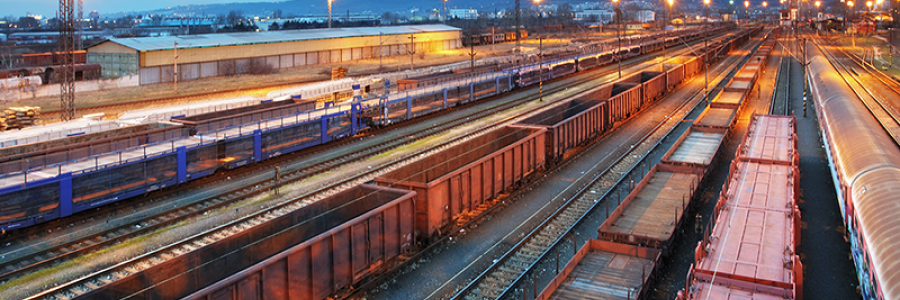
For several years now, the core inpatient business of hospitals and health systems has been under attack. Economic and competitive forces along with technological innovations are pushing as much healthcare as possible out of the inpatient setting and into a variety of alternative approaches from urgent care to virtual care—approaches with lower fixed costs and greater consumer convenience.
For legacy healthcare organizations, this phenomenon raises important strategic questions about how to participate in these emerging modes of care. On the other side of that coin, however, is an equally important set of existential questions:
What is the future of our core business?
How do we change our approach to the core business so that we can thrive?
Reinventing the Core Business
America’s freight rail transportation system is an example of how one industry successfully improved its core business in a rapidly changing environment. The strategies and results carry important lessons for America’s hospitals and health systems.
With the increase in trucking, automobile travel, and air travel, U.S. freight rail lines—which also operated many of the U.S. passenger rail lines—faced significant drop in demand. Many predicted the death of freight rail business as it had been known. The government’s formation of Amtrak allowed freight lines to shed their unprofitable passenger services, and consolidation and bankruptcies reduced the number of large Class I freight rail companies from 110 in 1958 to seven today. Smaller freight lines—many spun off from larger lines—continue to exist and handle specific regions.
Although an uncertain global economy continues to be a challenge for the remaining major freight lines, they have achieved significant revenue and profitability. Union Pacific, America’s largest freight line, generated $21 billion in revenue in 2017. Revenues have been relatively flat for the past several years, but the company’s gross margin has grown from an already impressive 67 percent in 2010 to nearly 76 percent in 2017. During the same period, Union Pacific’s operating margin grew from 29 percent to 38 percent. In fact, the freight rail line industry is now the most profitable transportation sector on a percentage basis.
The formula for success for America’s largest freight lines is highly suggestive for America’s hospitals and health systems.
Rethink basic structures and processes. One of the driving forces of freight rail efficiency has been a fundamental reworking of traditional processes to gain efficiency and to improve coordination with other carriers. This has resulted in a significant growth in intermodal transportation. The process involves using a single container for multiple modes of transportation—truck, rail, and/or maritime shipping. In some cases, a truck chassis accompanies the container onto the railroad. Intermodal terminals are proliferating, where containers are moved from one transportation mode to another. The result is greater speed and efficiency, and increased volume for transportation companies.
Aggressively manage cost, price, and efficiency. In 2004, Union Pacific was the least profitable of the major freight railroads. Because demand was highly dependent on economic factors outside the company’s control, Union Pacific’s leaders began focusing on pricing strategy and investments to improve efficiency. Today, a team of 70 network planners combines knowledge of railroad operations and financial modeling to ensure that each investment in tracks, trains, and terminals yields at least a 15 percent return. The company also relentlessly monitors and improves performance efficiency. Increasing the average speed of the line by just one mile per hour can reduce the need for up to 200 locomotives.
Apply innovative technology. Freight lines have aggressively implemented new technologies to increase efficiency and lower costs. For example, route optimization software instructs engineers on accelerating and braking to reduce fuel costs, based on the train’s weight distribution and the specific characteristics of the route. Union Pacific developed a way to operate a locomotive by remote control while decoupling cars, greatly increasing productivity and reducing the need for an engineer to operate the locomotive rather than being on a profitable run. And sensors are being tested to gather information for more efficient maintenance and operation.
Lessons for Healthcare
For legacy organizations, one of the major challenges of a disruptive environment is what to do about the core business. While hospitals and health systems need to rethink their role in the broader healthcare delivery system—one that promotes care outside the walls of a traditional hospital facility—they also need to rework their core business so that it is as effective, efficient, and contemporary as possible. Only with those improvements can the core business deliver high-quality care and services at a cost that achieves sufficient margin.
The example of America’s railroads shows how big a job this is. It involves rethinking care models, care sites, care coordination, and staffing models. It requires application of technology to provide care in the least intensive setting, and to ensure that clinical and operational decisions are based on the best data. And it requires a mindset rigorously focused on driving costs to the lowest appropriate level and ensuring that investments yield measurable value.
As in the railroad industry, economic forces, new technologies, and changes in consumer preferences will transform the nature of healthcare demand and usage. If those trends continue, we may see the number of hospitals reduced. However, the railroad industry experience suggests that there is room to thrive for those that drive quality and efficiency to new levels.
Longtime freight railroad executive E. Hunter Harrison said, “We have had a great deal of success…by focusing on what we can control—our costs and our service.” For America’s hospitals and health systems, fundamentally reworking the cost and service of inpatient care will be more critical than ever in an unpredictable environment.


